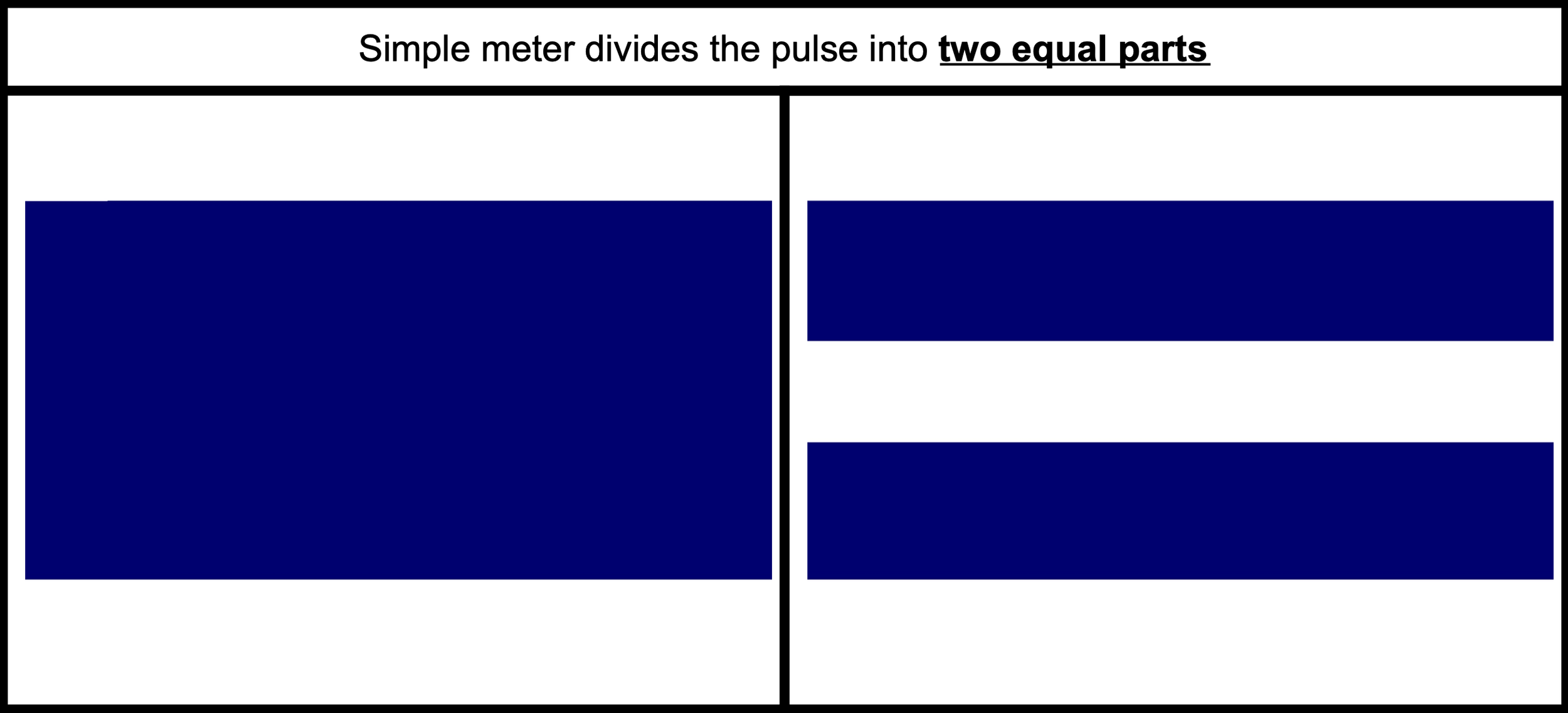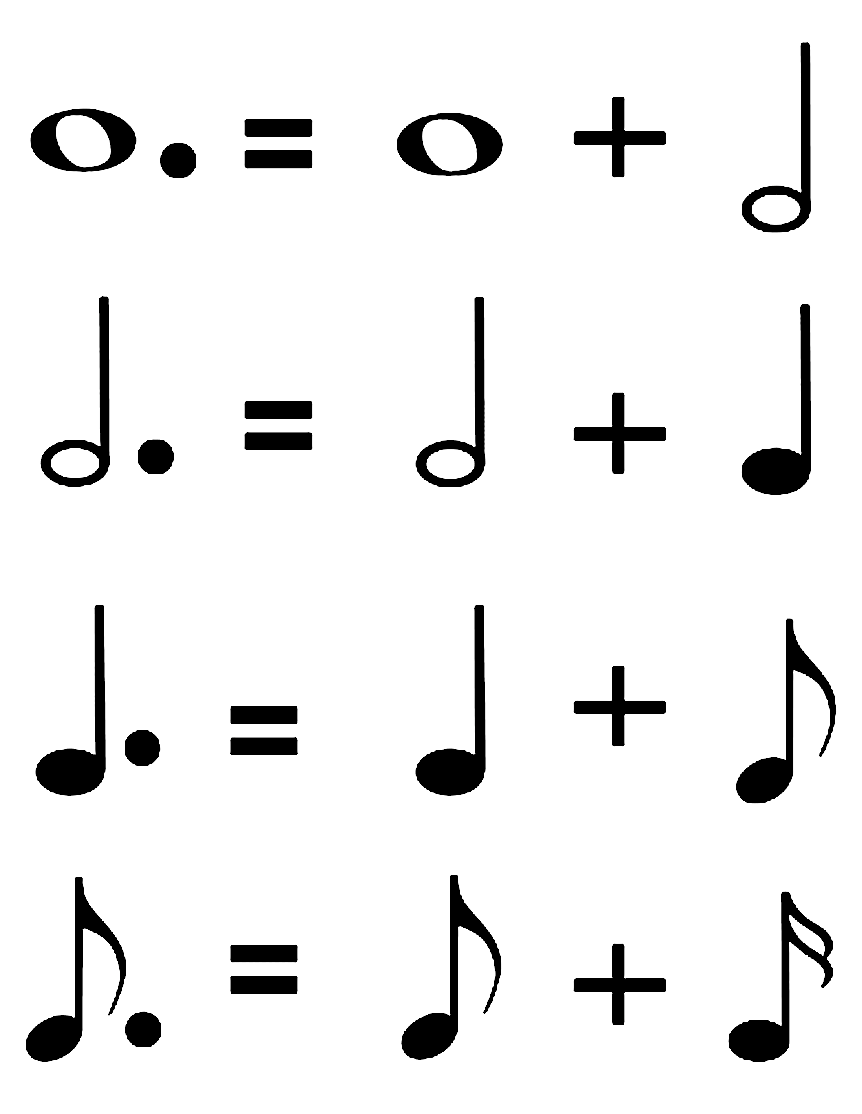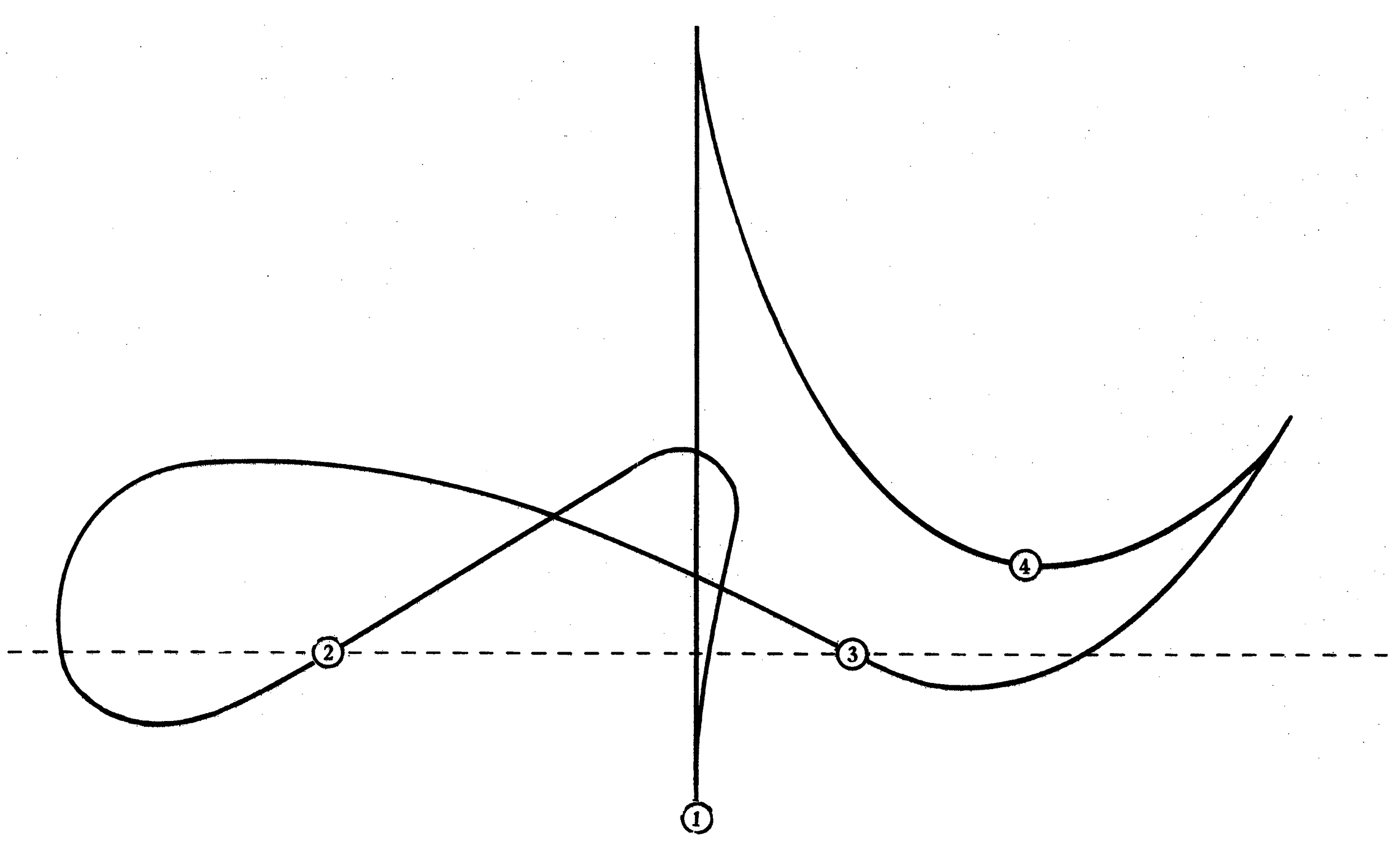11. Compound Meter Topics
Previously we have discussed the differences between simple meter and compound meter. The simple meter pulse is subdivided into two equal parts and the compound meter pulse is subdivided into three equal parts.
We then went on to talk about the rhythm tree and the relationship between note values.
It is not necessary to invent new note values for compound meter. Rather, the addition of a half pulse is added to create a natural pulse subdivision of three as opposed to two. Dotted rhythms are used in music notation to add an extra half value to the note the dot is attached to.
Dotted rhythms facilitate music notation that has natural subdivisions of three (compound feel). As an example, in the common compound meter time signature of 12/8, the number 12 (top number) indicates that there are 12 beats in the measure, and the number 8 (bottom number) indicates that the beat is the 8th note (⅛).
The beat in this case is not to be confused with the pulse. The pulse is what the listener will perceive as the recurring rhythmic value of each particular measure. So while a measure might have 12 8th notes, grouping all of these 8th notes in the compound feel of three subdivisions gives us four pulses in the measure.
Compare the approach to 12/8 time signatures to the simple meter of 4/4. Both of these time signatures have four pulses in the measure, but the 12/8 contains an extra 4 8th notes due to the added half beat to complete the triple feel subdivisions present in each pulse.
MOZART “Lacrimosa” from Requiem
A music director conducting a work in 12/8 time signature would use a conducting pattern of 4.
In simple meter, each of these conducting patterns would be subdivided into two 8th notes. In compound meter, however, there would be three 8th notes in the span of that same conducting pattern. The extra added 8th note, or half beat, into each of the pulses expands the possibilities of rhythmic patterns that are possible in compound meter.
Below are some examples of rhythmic patterns that demonstrate a compound meter feel, and how those rhythms might be notated according to the “language” of Western music theory.
"Chodská Kolečka" (traditional, Czech Republic)
VILON'ANDROY "Lahy Jo" (Madagascar)
SONAH JOBARTEH "Gainaako" (The Gambia)
Being familiar with simple and compound meter rhythmic patterns serve as springboards to accurately reading and performing more complex time signatures, known as mixed meters, that contain both simple and compound subdivisions within the same measure.
ALBERTO GINASTERA “Los peones de hacienda” from Estancia (Argentina)
VILON’ANDROY ”Gasikara” (Madagascar)














